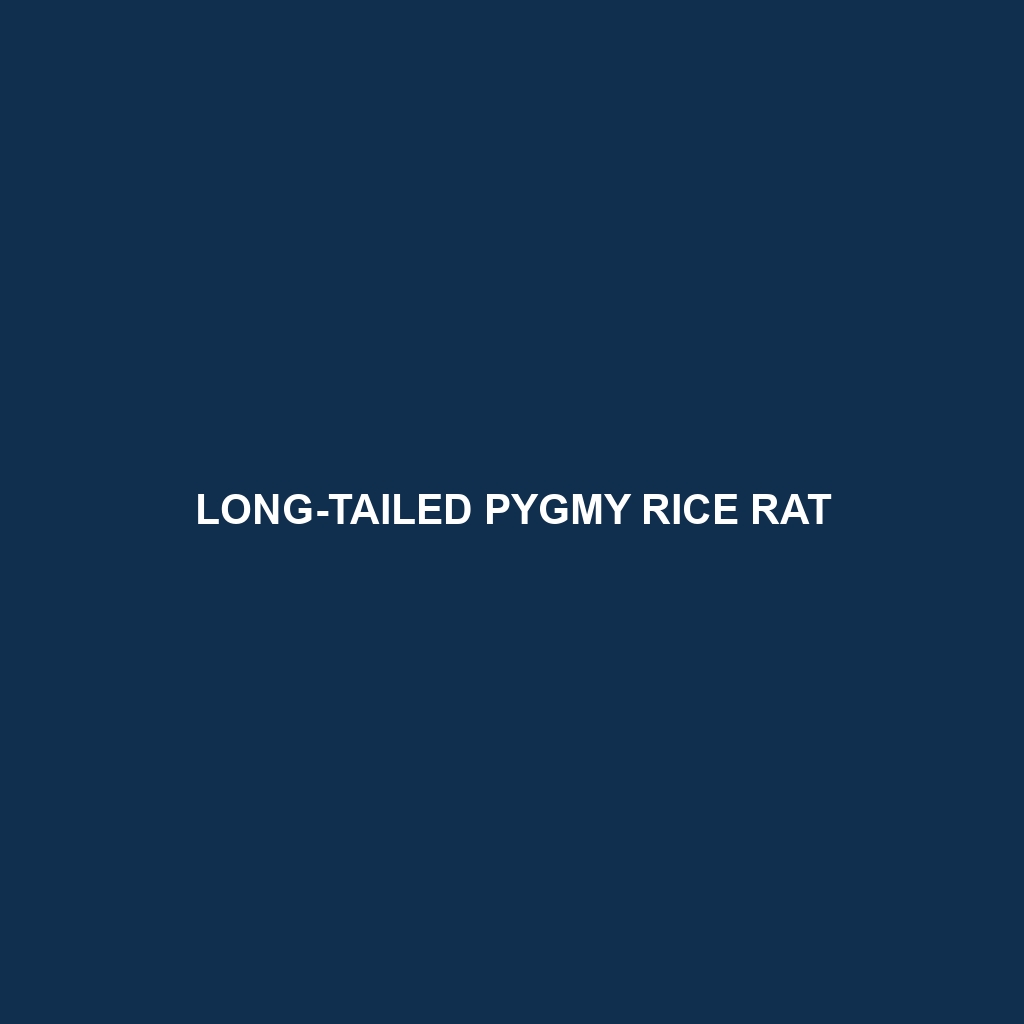Long-tailed Pygmy Rice Rat
Common Name: Long-tailed Pygmy Rice Rat
Scientific Name:
Habitat
The Long-tailed Pygmy Rice Rat is primarily found in the wetlands of Central and South America, with notable populations in countries such as Panama, Colombia, and Ecuador. These rodents inhabit marshy areas and rice fields, where they thrive in aquatic vegetation and dense cover which offers both food and shelter. Additionally, they prefer regions with abundant grass and sedges, which are essential for their survival.
Physical Characteristics
The Long-tailed Pygmy Rice Rat is a small rodent, measuring approximately 15 to 20 cm in body length, with a tail that can extend an additional 10 to 15 cm. Its fur is typically a rich brown or gray with lighter underparts, providing excellent camouflage within its natural habitat. The tail is notably long and slender, which is a significant characteristic that distinguishes it from other rodent species. Its rounded ears and small, sharp claws are adapted for climbing and foraging.
Behavior
This species is primarily nocturnal, exhibiting activity during the night when it forages for food. The Long-tailed Pygmy Rice Rat is also an agile swimmer, often seen navigating through water in search of sustenance. They are known to construct elaborate nests from reeds and grasses, providing security from predators. Their social behaviors include living in small family groups, which enhances their chances of foraging success and predator avoidance.
Diet
The Long-tailed Pygmy Rice Rat is an omnivorous feeder, with a diet consisting mainly of seeds, grains, and various aquatic plants. In agricultural settings, it often feeds on rice, making it both a characteristic inhabitant of rice fields and a potential pest for farmers. Additionally, it may consume insects and small invertebrates, highlighting its adaptable feeding habits and dietary diversity.
Reproduction
Breeding occurs year-round, with peak seasons varying based on local environmental conditions. The female Long-tailed Pygmy Rice Rat typically gives birth to 2 to 5 offspring per litter, with gestation lasting about 25 days. The young are born altricial, requiring care and protection from their mother for several weeks before they are weaned. Notably, mothers often build additional nests to protect their young from potential threats.
Conservation Status
The Long-tailed Pygmy Rice Rat is currently classified as “Least Concern” by the International Union for Conservation of Nature (IUCN). However, habitat destruction and agricultural expansion pose potential threats to its populations. Therefore, conservation efforts focusing on wetlands preservation are crucial for the long-term survival of this species.
Interesting Facts
– The Long-tailed Pygmy Rice Rat exhibits remarkable swimming abilities, which allows it to escape predators effectively.
– Its long tail not only aids in balance but also serves as a rudder while swimming.
– In some agricultural regions, these rodents are appreciated for their role in pest control, as they help in managing insect populations.
Role in Ecosystem
The Long-tailed Pygmy Rice Rat plays a vital role in its ecosystem by acting as both a herbivore and a prey species. Its foraging habits help in seed dispersal, promoting plant diversity in its habitat. Additionally, it serves as a food source for various predators, including birds of prey and snakes, thus contributing to the ecological balance. The rat’s presence indicates healthy wetland ecosystems, which are essential for numerous other species and environmental processes.
